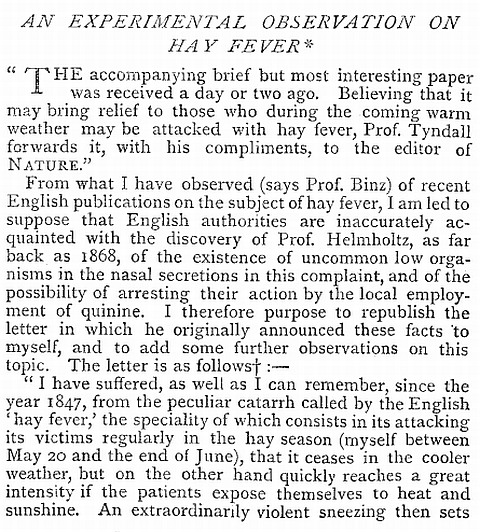Here is the announcement of an allergy meeting in London (where I will be too :-). Continue reading Allergy School
All posts by admin
Women explained
I am not sure if my count of sequenced individuals is correct. While the Human Genome Project and Celera used a DNA mix for their draft version of the human genome, the next genomes were provided by Watson and Venter. Numer 4 to 12 were Continue reading Women explained
Open peer review – publish first, review later
c’t 10.2008:82-89 has a nice article about open peer review “Die Weisheit der Massen” summarizing the current peer review process – the top line of the cartoon below. Following submission of a paper, it is initially screened for some formal requirements before being submitted to anonymous peer review and finally being published. Anonymous peer review lasts between 2 months and 2 years (!) and is abbreviated so far only by one biomedical journal Continue reading Open peer review – publish first, review later
Rough and tumble science
Over the years I have collected a lot of curious hypotheses how allergy develops. Only recently I ended this list as it became rather long – and to be polite – rather useless. Sorry, less polite – but nonsense at its best Continue reading Rough and tumble science
Your DNA data here
Looking at the log file I found that an anonymous visitor was looking for “Jim’s DNA data” here. I thought of James Watson first. Obviously, however, the anonymous visitor was looking for something different: Continue reading Your DNA data here
More retro vitamin D
During my recent trip to London, I could get a brief glimpse into the 1932 book “Vitamin D” by Reed, Struck and Steck. As this volume is not available in a German library and as it was not allowed by the British library to travel, I took now the lengthy procedures of registering, waiting in the queue, before searching this book for any allergy related items.
It seemed to be worthwile, although with some unexpected results: Continue reading More retro vitamin D
3 R tips for loops
Tip 1: Avoid loops.
They are generally slow – use a function instead. Even with the need of variable and fixed columns in a loop, a function may be constructed like
apply(data,2,function(col2){table(col1,col2)
Tip 2: Always show current state.
Include options(warn=1) and show current state with cat(“message\n”);flush.console();
Tip 3: Avoid merging steps.
Use instead datasets in same order and with the same subset of the larger table before updating anew column with data from the second table.
DNA for DNA
It might be fun to read here on a genetics board about DNA (Direct Note Access) which is a technology implemented in Melodyne that can extract notes from polyphonic music.
So far, it does not use a library of musical instruments according Peter Neubäcker, head of development, in an interview published in c’t 8/2008, p 34. It separates “musical content” defined by periodicity, similar overtones and meaningful musical distance like halftones. Although that’s something bioinformatics is trying for some while for DNA (desoxyribonucleic acid), I wonder if the decomposition concept in DNA would works also for DNA, yea, yea.
Ivan Hajek – there is no better accordion player
This morning when leaving the Munich underground, I could hear Ivan – the best accordion player in the world. There are numerous videos at YouTube, so listen if you like Continue reading Ivan Hajek – there is no better accordion player
That’s one small step for (a) man, one giant leap for mankind
The BBC headline yesterday is close to the famous quote of Neil Amstrongs’ with reporting the United States blocking now genetic discrimination.
Or as Kennedy put it forward “the first new civil rights bill of the new century”. Unfortunately, we are lagging behind in Europe. My recent initiative to promote such a legislative in Germany was futile; the most recent goverment proposal only earned a lot of criticism.
A protestantic view of science
The 2006 document on perspectives of the German Protestant Church (EKD) briefly touches also the relation to science on p. 44 Continue reading A protestantic view of science
Personal Genome Explorer
Laborjournal 4/2008 reports a new software tool for DNA addicted people: the Personal Genome Explorer which is based on SNP annotation by SNPedia. So, what I tried to institutionalize on a sound level as “Genome Explained” possibly within the framework of HGVS is now being done by a street initiative fueled by early adopters like Cross, Arlington, Halamka and Smolenyak. It looks very much like an unholy alliance of profit interests and technical curiosity than good science and responsible counseling, yea, yea.
Addendum: If you believe in support vector machines, you can even let your laptop screen the medical literature for genetic associations with GAPscreener. <irony> No more lengthy training in genetics, statistics, epidemiology and bioinformatics, no more years of collecting all relevant papers & abstracts, just let your laptop score your DNA variants </irony>
Our lives are unrepeatable experiments lacking a control
a prosaic quotation from the recent Nature correspondence section that highlights why genetics has been leading us into nowhere.
Our lives are unrepeatble experiments lacking a control. Myriad external factors interact with genetic and epigenetic factors and with chance to determine whether we are well or ill, smart or dull, successes or failures.
Yea, yea.
Herrmann von Helmholtz on the cure of hayfever
It was difficult to find but I knew it should be there: a letter of Herrmann von Helmholtz about his private attempt to cure hay fever. Published in the increasingly important Nature magazine on May 14, 1874 von Helmholtz describes the vibrio like bodies in his own nasal fluid and the successful local treatment with quinine.
Unfortunately there is a consecutive letter that did not confirm this effect. I also do not know how this treatment would have worked. Fiction, placebo or true antiparasitic side-effect? We even know of quinine induced allergy, making even reverse causation possible.
G. Kanny, J. Flabbée, M. Morisset M, D. Moneret Vautrin. Allergy to quinine and tonic water. Eur J Intern Med 14 (2003), p. 395-396.
R. Cundall, Idiosyncrasy to quinine in bitter lemon. Br Med J 20 (1964), p. 1638.
How we are reshuffling our genome
is an exciting question that will have a large disease relevance. I think this is not so much about cytogenetic abnormalities but the general understanding which genetic modules are recombining, e.g. are compatible in terms of function, and which need to be tight together. Continue reading How we are reshuffling our genome

